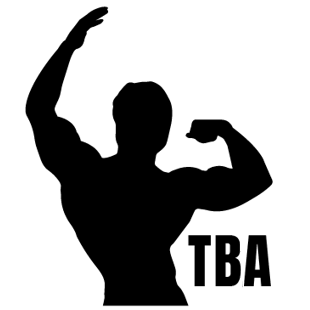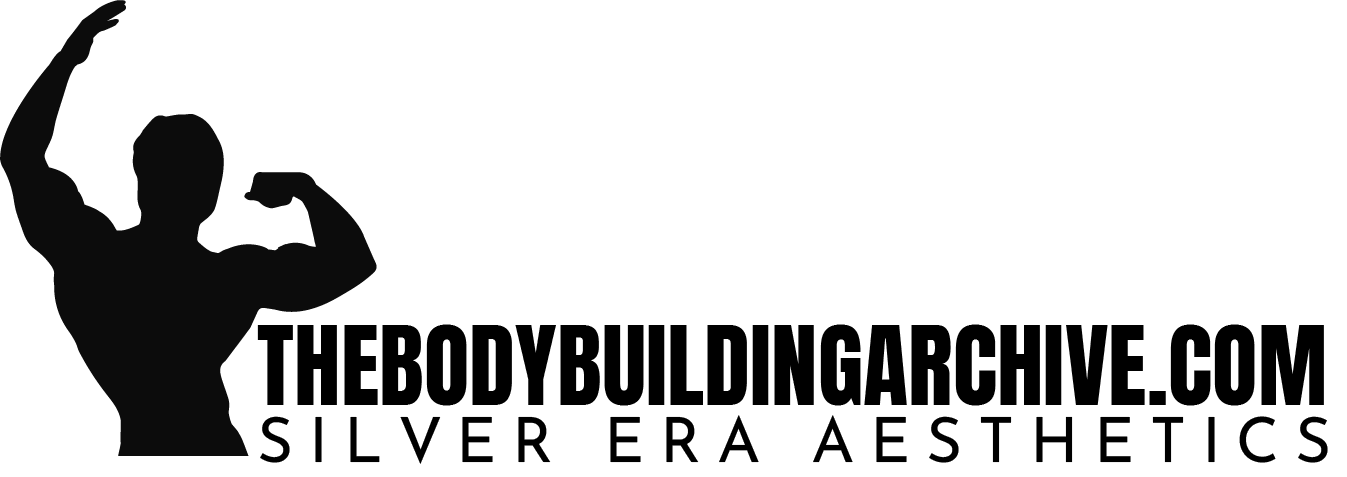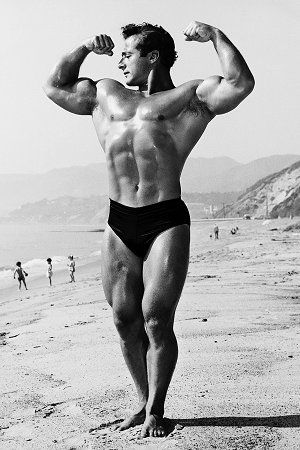When you talk about the Silver Era of bodybuilding, George Eiferman has a seat amongst the greats. Alongside Steve Reeves, George joined the Navy during World War Two, aged seventeen. In his four-year service, George gained 40lbs of muscle.
George returned from the Navy aged twenty-one and focused his attention on bodybuilding. He joined Fritsche’s Gym in Philadelphia. Less than twelve months later Eiferman claimed the title of My Philadelphia. Next up was Mr. America, where George Eiferman placed fifth. Steve Reeves took first (1947).
The following year George won Mr. California. One month later he claimed the title of Mr. America (1948). After claiming the title, George moved to California and became a regular at Muscle Beach.
In the following years, George took his experience and expertise on the road. He visited high schools and educated children on weight training and nutrition.
George was an exceptional bodybuilder and advocate for the sport. He believed that a muscular and aesthetic body reflects internal health and wellness. Steve Reeves had the same philosophy. A far stretch from modern bodybuilding.

George had already claimed the title of Mr. America but was never satisfied. In 1962 he walked on stage and claimed the title of Mr. Universe. The Mr. Universe title was the most prestigious in bodybuilding.
George stopped competing but never stopped promoting the importance of health and fitness. George went on to open several gyms in Hawaii, Las Vegas, and California. George’s California gym was the setting for much of the footage in Pumping Iron.
Eiferman made his way onto television in the 1980s with a show called Take 5 for Fitness. George formed relationships with the biggest stars in bodybuilding and entertainment. His client roster included Sylvester Stallone and Elvis.
Fun Fact: George Eiferman was the inspiration for the original George of the Jungle (1960s). The cook on George’s navy ship during World War 2 created the character.
Eiferman’s induction into the IFBB Hall of Fame came in the year 2000. Immortalized in the archives of bodybuilding.
Training & Workouts
Despite bodybuilding being an aesthetic pursuit, George Eiferman was immensely strong. Most bodybuilders at the time favoured full-body routines, and George was no different.
Steve Reeves and George Eiferman both understood the importance of recovery. They trained three days a week.
Below is an example of one of George Eiferman’s full-body routines. Rest for several minutes between sets.
- Hack Squats: 3 Sets 7-10 Reps
- Bench Press: 3 Sets 7-10 Reps
- Bent Arm Flyes: 3 Sets 7-10 Reps
- Standing Side Lateral Raise: 3 Sets 7-10 Reps
- Alternate Dumbbell Press: 3 Sets 7-10 Reps
- Cheating One Arm Rowing: 3 Sets 7-10 Reps
- Cheating Barbell Curl: 3 Sets 7-10 Reps
- Dumbbell Concentration Curl: 3 Sets 7-10 Reps
- Dumbbell Wrist Curl: 3 Sets 7-10 Reps
- Side Bends with Kettlebell: 3 Sets 7-10 Reps
- Sit Ups (bodyweight only): 3 Sets 8-12 Reps
George had key exercises he focused on to help him develop a well-rounded physique.
The Bench Press
George recognized the importance of the bench press from the start. Every workout included the bench press; he alternated between wide, neutral, and close-grip. The results speak for themselves.
Eiferman had some of the best pec-development ever seen. There are stories of George bench pressing 400lbs without a warm-up.
Deadlift Hold
Forearms were a strong attribute of George’s physique. He credits this to his training techniques which included the deadlift hold.
George would load a bar as heavy as he could and hold it until his grip gave way. An alternate method is to hold two weight plates with a pinch grip (pinch between thumb and fingers).
George Eiferman sits amongst the greats of the Silver Era. Not only was his physique impressive, but he changed countless lives through his work. George traveled to countless schools and promoted the importance of health and fitness.
A true bodybuilding legend.





